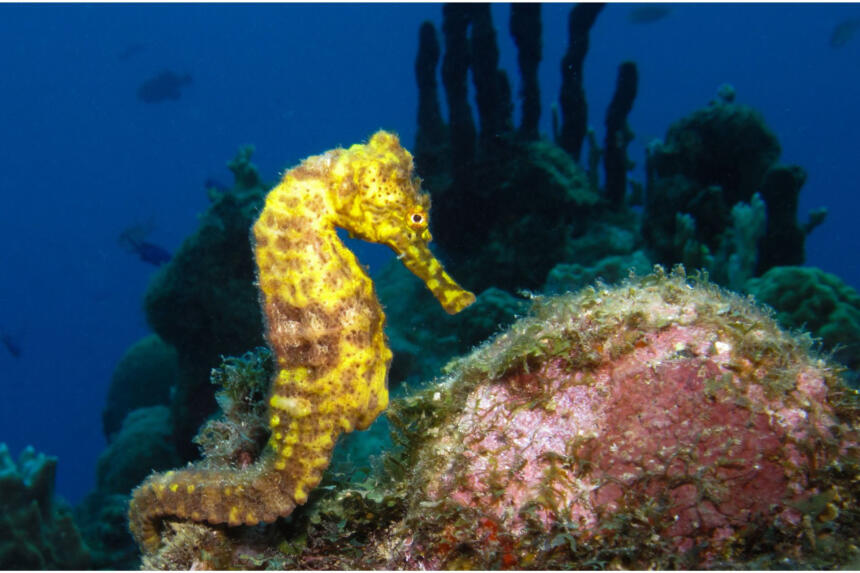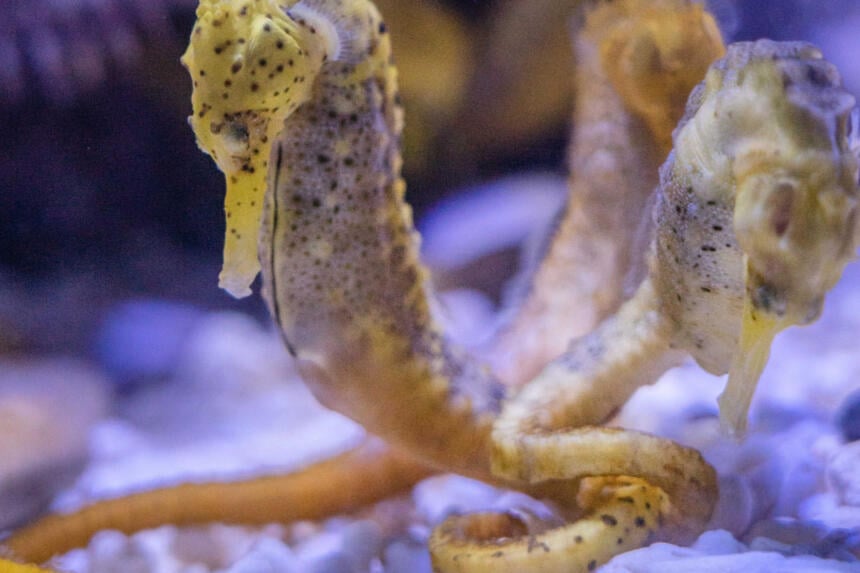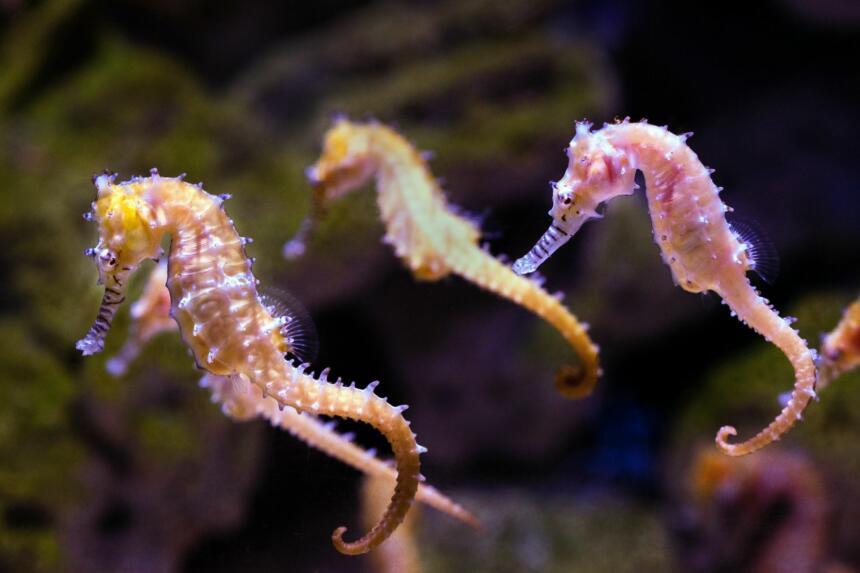Seahorse: The cute little monster of the sea
Did you ever wonder about underwater life and what it is like to live there? Although Little Mermaid is a great picture, we all know by now they’re not singing and dancing down there. Today, we will tell you about a specific animal of the sea and some really cool facts about its life. So, let’s get to know the seahorse. A small fish that some consider a monster. But it is not really like that!
Name origin
Seahorse got its name from the ancient Greek word “ίππος”(ippos/hippos) which means horse in ancient Greek and the word “κάμπος” (kampos) which means sea monster. The reason it’s considered a monster of the sea is its small horse-like head and tiny body with a tail that makes this creature look like a monster. While they might be deadly to other sea creatures, for humans, they rarely present a threat. They don’t bite unless they are touched and even then, they often do not release the venom. There are many amazing facts about this unique species, and we’ve listed a few.

The life of a seahorse
Seahorses have first appeared 25 to 20 million years ago in the oceans. There are around 36 different species of seahorses (or hippocampus) and three of them live in the Mediterranean Sea. Others are found in North America, South America in the Atlantic, the Pacific, and the Indian Ocean.
Seahorses are actually fishes! Some people don’t consider them fish, but their way of swimming and their characteristics are ones of a fish! Their lifespan is around 3 years and their weight reaches only 200 g. Their body size ranges between 2 and 35 cm. These small creatures belong to the family of Syngnathidae and their diet mostly consists of plankton and tiny fish.
Movement in the water
A tiny pocket inside their body called a ‘swim bladder’ enables them to move up and down, by adjusting the volume of air. The actual swimming occurs by using the long fin on their back and two smaller fins on each side of their head. The beating rate of these fins is similar to those of a humming bird’s wings: around 30 – 70 times per second! Because of their upright posture, their speed isn’t that impressive (only 150 cm per hour). Instead of scales, seahorses have solid bony plates that help them stay upright. Their tail is a very important tool as they grab prey with it. It is very flexible.
Amazing facts about seahorses that will blow your mind (Daily and family life)
There are some facts about seahorses that prove they have a monogamous and romantic family life. For example, seahorses prefer to swim in pairs with their tails linked together, and they mate for life. The way they flirt with each other is impressive as they engage in an eight-hour courtship dance which includes spinning around, swimming side by side, and changing colors. The weirdest and most unique thing about seahorses is that male seahorses are responsible for the pregnancy and not women. This enables the female to produce more eggs straight away and reproduce quicker. The female seahorse releases up to 50 eggs into a pouch on the male’s abdomen. Then the male seahorse fertilizes them and carries the eggs in his pouch until they are ready (around 45 days). Some species give birth to up to 1.000 babies.

Life as a seahorse
Seahorses are considered bad swimmers, and they can easily die of exhaustion when caught in storm-roiled seas, as they are so tiny and sensitive. They have no teeth or stomach, and they digest food very quickly. So they have to eat practically all day long.
Seahorses’ importance in marine life and why we have to protect them
Seahorses are an important part of the marine ecosystem. They need to be protected. What makes these odd fish stand out is, as we have already mentioned, their unique and unusual shape as well as the charming family life, and personality they exhibit. As many as 150 countries in the world have signed the Convention on International Trade in Endangered Species (CITES) which prevents commercial trading of wild species like seahorses if their existence is under threat. Croatia is also a part of this convention. Twelve seahorse species are listed as “vulnerable” by the International Union for the Conservation of Nature, one step down from endangered.
One thing we can do to protect seahorses is to choose our seafood wisely. We should avoid trawled seafood and farmed shrimp, and try to stop illegal wildlife trade and unreported fisheries.

Seahorses in Croatia
In Croatia, there are two species of seahorse. Both of them are vulnerable. So, avoid buying dried seahorses as souvenirs. Instead, aim to protect them. If you’re lucky enough to meet a seahorse, take a picture to capture the moment, but don’t touch it or take it out of the water.
In Croatia, many protected areas preserve these species. The Geopark Vis Archipelago in Vis Island works to protect them in a natural environment.
The first of the two species we can find in the Adriatic sea is called Hippocampus ramulosus. It owes its name to the many skin extensions it has. It swims slowly by flashing its dorsal and pectoral fins, making it very approachable. When it realizes someone is watching it, it attempts to turn its back on that creature.
The second one is the short-snouted seahorse Hippocampus hippocampus. They are benthic, meaning that they live in the bottom of the sea, and spend the most of their time ‘hanging onto’ seaweeds, plants, hard rock, and man-made surfaces. Both of them are under strict protection.
Find out more about the protection of seahorses in the organization Project Seahorse which is based in London, and they are working for seahorses worldwide.
Seahorses are beautiful, weird, charming, and wacky animals. If you ever go diving, look for them in seagrasses, mangroves, reefs, and estuaries, as it is their habitat. What do you think of the seahorses now that you know more about them? Have you ever encountered one?






